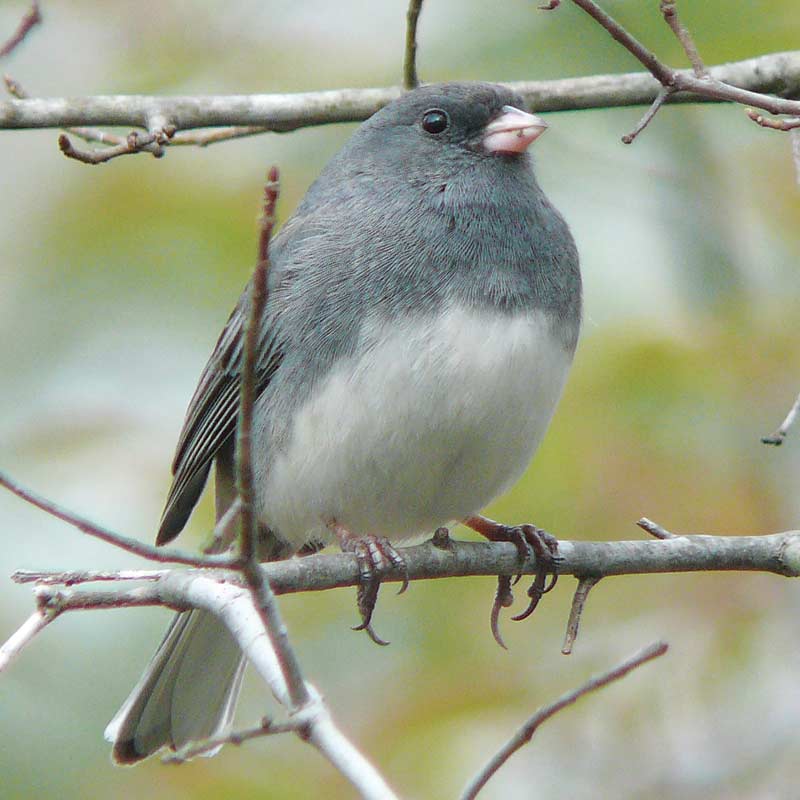We’re Back! The Dark-Eyed Juncos
The Great Outdoors | November 1, 2019

By Jackie Scharfenberg, Forest Naturalist, Wisconsin Department of Natural Resources
Do you know what that means when we, the dark-eyed juncos (Junco hyemalis), return to Wisconsin?
It means winter is not too far off. We leave the northern forests to enjoy your “balmy” winters. We head north again as spring makes its reappearance in mid-March through April.
Snowbirds
Some folks call us “snow birds” because we show up for winter – not because we look like snow. Across North America you can find 12-15 different color variations of juncos. In the eastern United States, we sport the slat-colored form. We are a medium-sized sparrow with a rounded head and long tail. No bright colors for us. Instead, we have a suit of dark grey with a bright white belly. Take note of our pale pink, short, stout bill and dark eyes. When we fly or fan out our tail, we flash our prominent white outer tail feathers. This is one of our distinguishing traits. Our females appear a bit more brownish with less crisp coloration.
Pecking Order
Listen! Did you hear a high chip or an even pitched trill? That’s the song and call of the males as only they sing.
In summer we breed in coniferous forest across Canada, western United States, and in the Appalachian Mountains. In winter, we prefer roomier spaces of open woodlands, fields, parks, roadsides, and backyards.
Each winter we head to the same 10-12 acres where we congregate in fairly large flocks. Once we arrive, we set up a pecking order with early arrivals over later ones, males over females, and adults over younger birds. To show who’s boss, dominant birds rush at or peck other birds chasing them away.
Our Diet
Don’t look up to find us, but watch for us hopping (not walking) on the ground. Often, we join up with other sparrows and bluebirds to feed. In winter we spend about six hours searching for food by pecking or scratching at the leaf litter or among plants. Our winter diet consists primarily of small seeds. At bird feeders, we prefer millet over sunflower seeds. In summer seeds make up 75 percent of our meals with the other 25 percent insects – good protein for fast-growing chicks.
Watch for us as we do the grass stem “ride.” We fly to a tall grass stem and hold on as the stem bends down. Then we stand on the stem on the ground and eat the seeds.
WATCH OUT!
Sharp-shinned hawks love to eat small birds like us juncos. We must keep a keen eye out for other predators like shrikes, owls, and cats. Many small mammals including jumping mice raid our nests for our eggs and young. When a predator approaches, we hide under something; we’re not proud when it means survival. If a predator approaches our nest, we chip loudly and fly around the nest site. Sometimes we dive at these menaces.



